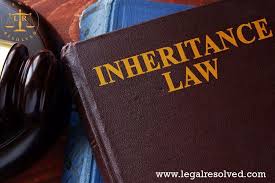
Week 15: Kinds of Heirs Under Hanfi Law
There are 3 main categories of heirs when it comes to Islamic Inheritance. These are:
1 – Zaawil Furoodh: These are the “obligatory heirs”. They are all the heirs who have fixed shares prescribed to them.
2 – `Asabaat: These are the “residuaries”. After the zaawil furoodh get their respective shares, the left over estate (if any) will be given to them.
3 – Zaawil Arhaam: These are relatives through the female line. Although they do inherit in some cases, right now we will simply refer to them as “non-heirs”. As far as you are concerned, these relatives are automatically deprived from inheriting. Insha’Allah, these will be explained at a later, more advanced stage.
It should be noted that anytime a relative is being talked about, it is from the point of view of the mayyit (deceased). So “Father” means, “The mayyits father”. Now lets list the relatives in each category.
Zaawil Furoodh:
- Father
- Paternal Grandfather (Father’s father, or higher)
- Husband
- Akhyaafi brother
- Mother
- Paternal Grandmother (Father’s mother, or higher)
- Maternal Grandmother (Mother’s mother, or higher)
- Wife
- Daughter
- Granddaughter (through son)
- Haqeeqi sister
- Allaati sister
- Akhyaafi sister
Some important things to note here. An akhyaafi sibling is a half sibling with which you share the same mother, but different fathers. If your mother was divorced, then remarried and had a child with her new husband, then that child is your akhyaafi sibling. An allaati sibling is a half sibling with which you share the same father, but different mothers. If your father has multiple wives, then any children he has with other than your birth mother will be your allaati siblings. Similarly, if your single father remarries, then has a child with his new wife, that child will be your allaati sibling. A haqeeqi sibling is a sibling with which you share the same father and same mother. This is your “full” brother/sister.
`Asabaat:
- Son, or sons son (and lower down the line)
- Father, or father’s father (and higher)
- Haqeeqi brother
- Allaati brother
- Haqeeqi brothers son (haqeeqi nephew), or his son’s son (and lower down the line)
- Allaati brothers son (allaati nephew), or his son’s son (and lower down the line)
- Haqeeqi paternal uncle (your father’s haqeeqi brother)
- Allaati paternal uncle (your father’s allaati brother)
- Haqeeqi paternal uncles son, or his sons son (and lower down the line)
- Allaati paternal uncles son, or his sons son (and lower down the line)
It should be noted that whenever a whole line of relatives is mentioned, the farther relative will only inherit in the absence of the closer relative. Examples: Grandson will only inherit in the absence of a son. Haqeeqi brothers sons son (i.e. haqeeqi nephews son) will only inherit in the absence of the haqeeqi brothers son (haqeeqi nephew). Paternal grandfather will only inherit in the absence of the father, and similar with the mother and grandmothers.
Also, note that the father and paternal grandfather are listed in both Zaawil Furoodh and `Asabaat. Why is this? These two heirs are assigned a specific fraction of the estate (what that fraction actually is will be discussed later), but above and beyond that, in certain cases, they will also get the residue (if any) which remains after the other heirs get there shares. This is in addition to the specific share they are already assigned. Hence, they are both from among the zaawil furoodh and `asabaat simultaneously.
Zaawil Arhaam
- Children of daughter and their descendants
- Children of sister (whether haqeeqi or allaati or akhyaafi) and their descendants
- Children of akhyaafi brother
- Daughters of haqeeqi brother
- Daughters of allaati brother
- Daughters of haqeeqi paternal uncle
- Daughters of allaati paternal uncle
- Daughters of haqeeqi paternal uncle’s son
- Daughters of allaati paternal uncle’s son
- Maternal uncle (Mother’s brother, whether haqeeqi or allaati or akhyaafi) and his descendants
- Akhyaafi paternal uncle (Father’s akhyaafi brother), and his descendants
- Paternal aunt (Father’s sister, whether haqeeqi or allaati or akhyaafi ) and her descendants
- Maternal aunt (Mother’s sister, whether haqeeqi or allaati or akhyaafi) and her descendants
- Maternal grandfather – Mother’s Father
- The Maternal grandfather of the mayyit’s father – Father’s Mother’s Father
- The Paternal grandfather of the mayyit’s mother – Mother’s Father’s Father
- Mother’s maternal grandfather – Mother’s Mother’s Father
- Mother’s paternal grandmother – Mother’s Father’s Mother
As mentioned before, the zaawil arhaam will be thought of as non-heirs for now.
Memorize these categories and the relatives in them as best you can, as they will help you to know who inherits and how he/she inherits. Eventually (as we get more advanced) you’ll know the members of at least the first two categories off the top of your head, insha’Allah.
It is important to note that only the sons children are heirs. Sons daughter is zaawil furoodh, while sons son is an `asbah. The daughters children (whether male or female) are non-heirs (zaawil arhaam). Also note that all aunts are non-heirs, along with maternal uncles. Even though a maternal grandfather is a non-heir, the maternal grandmother is an heir. In fact, both paternal and maternal grandmothers are from among the zaawil furoodh. These kinds of nuances should be kept in mind so as not to confuse relatives into the wrong category.



